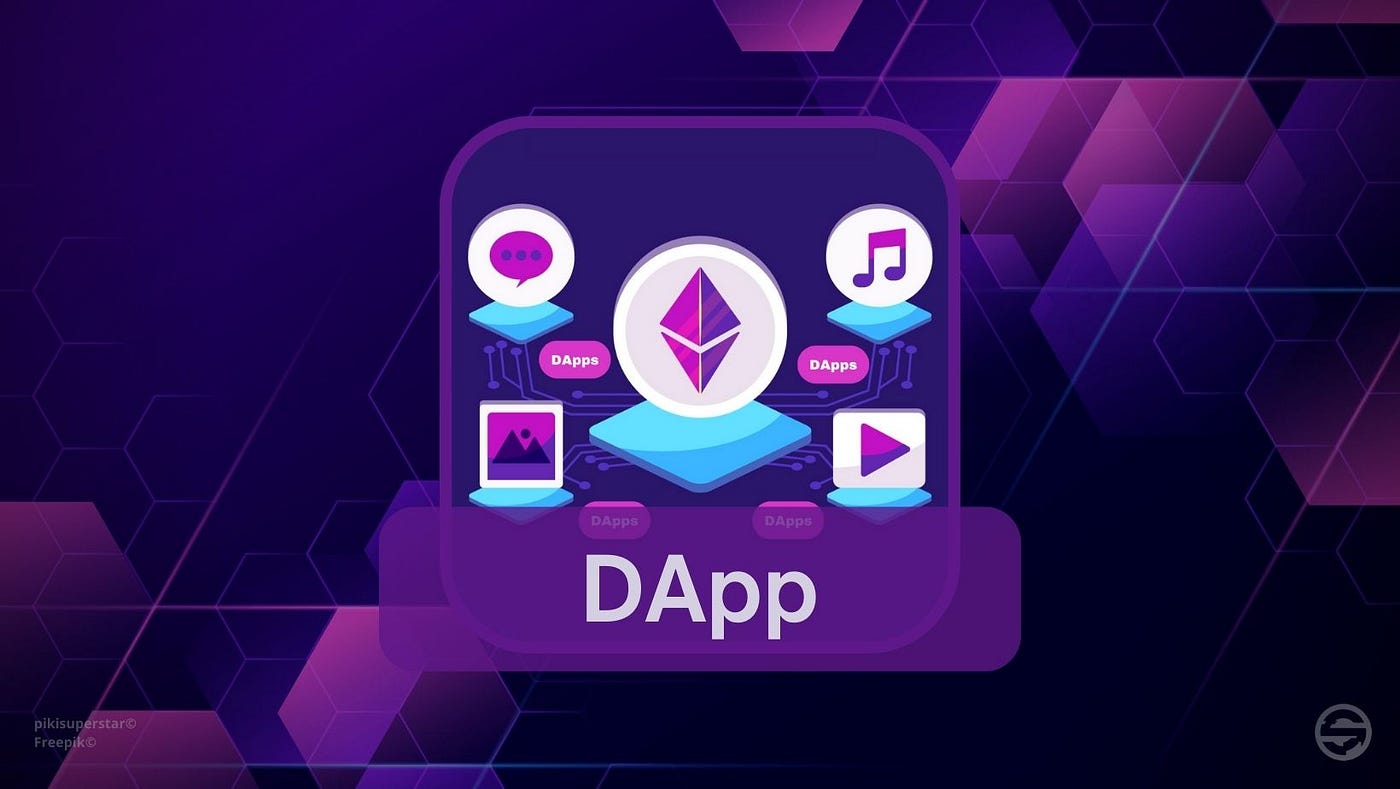What is a dApp? A Beginner’s Guide to Decentralized Applications
 Rajtilak Pandey
Rajtilak Pandey
Imagine an app that doesn’t rely on a single company’s servers, isn’t controlled by a central authority, and runs on a network where users hold the reins. Sounds futuristic, right? Welcome to the world of decentralized applications, or dApps—a cornerstone of the blockchain revolution shaking up how we think about software.
Defining a dApp
A dApp (pronounced “dee-app”) is an application that operates on a decentralized network, typically a blockchain, instead of centralized servers owned by a single entity like Google or Amazon. Think of it as a regular app—say, a social media platform or a game—but with a twist: its backend is distributed across a peer-to-peer network, making it resistant to censorship, downtime, or control by any one party.
At its core, a dApp combines two key elements:
Frontend: The user interface (UI) you interact with, just like any app—sleek, clickable, and familiar.
Backend: Smart contracts (self-executing code) running on a blockchain, replacing traditional databases and servers.
The result? An app that’s transparent, trustless (no middleman needed), and often open-source.
How dApps Work
To understand dApps, you need a quick blockchain refresher. A blockchain is a decentralized ledger maintained by a network of nodes (computers). When you use a dApp, your actions—like sending cryptocurrency or voting in a decentralized poll—trigger smart contracts. These contracts execute automatically when conditions are met, and every move is recorded on the blockchain for all to see.
Take a decentralized finance (DeFi) dApp like Uniswap as an example. Want to swap Ethereum for another token? You connect your crypto wallet, select your trade, and Uniswap’s smart contracts handle the rest—no bank, no fees to a middleman, just code and consensus.
What Makes a dApp Different?
Traditional apps (centralized ones) rely on a company’s infrastructure. If Twitter’s servers crash, the app goes down. If a government bans it, you’re locked out. dApps flip this model:
Decentralization: No single point of failure. The app lives on a blockchain, spread across thousands of nodes worldwide.
Transparency: Open-source code lets anyone verify how it works.
User Control: You own your data, often via cryptographic keys, not a corporation.
Token Incentives: Many dApps use cryptocurrencies to reward users or fund development.
This doesn’t mean dApps are perfect. They can be slower than centralized apps (blockchain transactions take time), and user experience might feel clunky to newcomers. But the trade-off is autonomy and resilience.
Popular Examples of dApps
dApps span industries, proving their versatility:
DeFi: Aave and Compound let you lend or borrow crypto without banks.
Gaming: Axie Infinity blends play-to-earn mechanics with NFT ownership.
Social Media: Platforms like Steemit reward content creators with tokens, not ad revenue.
Marketplaces: OpenSea lets you buy and sell digital collectibles securely.
These examples showcase how dApps empower users, cutting out intermediaries and redistributing value.
Why dApps Matter
Centralized systems dominate today’s internet, but they come with baggage: data breaches, censorship, and profit-driven decisions that don’t always align with users’ interests. dApps offer an alternative vision—a “Web3” where power shifts from tech giants to individuals.
For developers, dApps open new creative avenues. You’re not just building an app; you’re crafting a mini-economy or governance system, often with tokens as fuel. For users, it’s about ownership—your digital assets, identity, and interactions aren’t at the mercy of a single entity.
Challenges Ahead
dApps aren’t mainstream yet, and for good reason. Scalability is a hurdle—blockchains like Ethereum can get congested, driving up costs (those infamous “gas fees”). User adoption lags too; managing private keys and wallets isn’t as intuitive as downloading an app from the App Store. Plus, regulatory uncertainty looms—governments are still figuring out how to handle decentralized tech.
But progress is rapid. Layer-2 solutions like Polygon are slashing fees, and user-friendly wallets are bridging the gap for non-techies. The dApp ecosystem is maturing, and its potential is undeniable.
Getting Started with dApps
Curious to explore? You’ll need:
A crypto wallet (e.g., MetaMask).
Some cryptocurrency (like ETH) for transaction fees.
A dApp to try—start with something simple like a decentralized game or marketplace.
Dive in, experiment, and you’ll see why dApps are more than a buzzword—they’re a glimpse into a decentralized future.
Final Thoughts
dApps redefine what applications can be: tools for freedom, ownership, and innovation. They’re not here to replace every app on your phone (yet), but they challenge the status quo of centralized control. Whether you’re a developer itching to build or a user ready to explore, dApps invite you to rethink the digital world—one block at a time.
Subscribe to my newsletter
Read articles from Rajtilak Pandey directly inside your inbox. Subscribe to the newsletter, and don't miss out.
Written by
